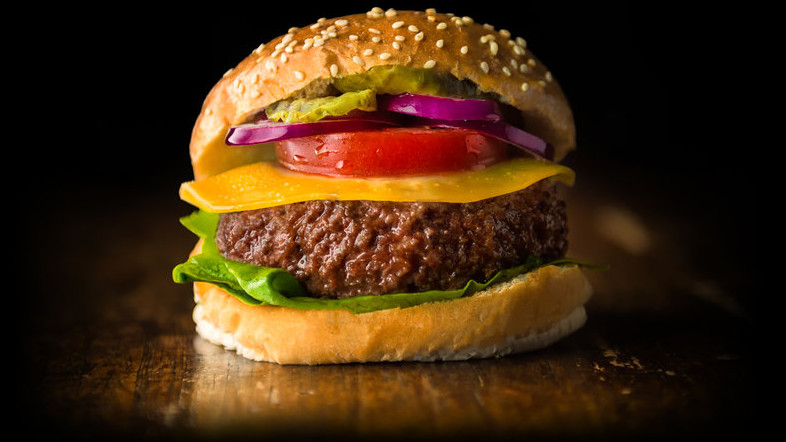
Upscaling in the race to cultured meat
A first wave of cultured meat companies is pushing forward. European start-ups such as Mosa Meat and Peace of Meat are part of the game.
Firms in the field attract financing rounds worth millions, and are also teaming up with biopharma companies and manufacturers to accelerate industrial scale-up. A first wave of companies is pushing the envelope, with US-based Memphis Meat among the leaders. But European start-ups like Mosa Meat or Peace of Meat are part of the game as well. They aim to have production up and running by 2022.
The goals are ambitious. The vision we want to offer is delicious meat with a global impact on sustainability at a very competitive price for mass consumers, Maarten Bosch says. He’s the CEO of Mosa Meat, one of the frontrunners in the cultured meat space. When the Dutch company presented the world’s first hamburger made from cultured cells back in 2013, the scientists were taking the first steps on a long journey filled with technological challenges to cultivate meat from a biopsy. Back then, the hamburger that made headlines cost €250,000. Most of the work was financed by Google co-founder Sergey Brin.
Need for strong partners and new financing round
Since then, the Netherlands-based company has grown. It now employs over 40 staff, and is in the process of moving into a new facility outside the university labs it has occupied until now. In late December, the company reached another major milestone when it published a new method for creating serum-free media for the growth of primary bovine myoblasts. Instead of using pricy fetal bovine serum, which is actually drawn from fetal calves, we have developed a plant-based replacement that performs as well as serum-derived medium to grow the meat cells, Bosch told European Biotechnology. Currently the company is preparing to transform its lab-proven process of cell differentiation and tissue formation into large-scale settings. Some parts of the process have been done already at a large scale, some haven’t. We’re able to make a few hamburgers, but we need to make millions or billions of hamburgers, Bosch says. It’s now about producing large volumes and bringing down costs. We can do it, but we have to prove it. And we will need to create a complete new value chain and ecosystem. The CEO knows his firm will need strong partners to be as quick as possible. Merck’s investment arm, M Ventures, is already supporting Mosa Meat, as is Swiss meat producer Bell Food Group. In a next step, the company is focusing on setting up a first pilot plant, and is pursuing a new major financing round. The goal is to have the pilot plant operational in 2021, and to start the first industrial production line in 2022, outlines Bosch.
Goal: Remain as European as possible
In January, the company announced a new strategic partnership with animal nutrition company Nutreco, which will help provide a large-scale version of the nutrient-filled medium used to grow the meat. Nutreco also pledged an undisclosed amount of funding to Mosa Meat, as did climate-minded investment firm Lowercarbon Capital. During the course of the year, Bosch hopes to attract further partners able to provide support with capital and/or strategic knowledge. We see a lot of interest in this space, but we will be selectively looking for those who provide a strategic fit to our plans, the CEO explains. One aspect of the firm’s strategy is to remain as European as possible, and initially launch in the EU, although Bosch is aware that regions like the US and Asia may have more potent investors and promise as a growing market for alternative meat in the long run. In the end, we want to make a global impact, he says.
How are US competitors doing?
Competitors in the field are on track as well, particularly in the US. In January, Silicon Valley start-up Memphis Meat announced the close of a US$161m Series B funding round – the largest ever in a cell-based meat company. It was led by SoftBank Group, Norwest and Temasek. Also joining the round are new and existing investors, including billionaires Bill Gates and Richard Branson, celebrities like Kimbal Musk, and conventional meat producers Cargill andTyson Foods. Memphis Meats wants to use the new funds to build a pilot production facility, continue to grow its team, and launch new products. Three years have passed since the firm served its first lab-grown breaded chicken strips to eager taste-testers in San Francisco. Even though the California-based company hasn’t made many headlines since then, a lot has been happening behind the scenes. The five-year-old high-tech meat-maker also claims to have developed a production method that doesn’t require fetal bovine serum. It has yet to announce a date to launch a product commercially, but has confirmed it’s working with regulatory agencies to ensure timely and safe market entries.
A regulatory pathway to market
Last August, Memphis Meat was among a group of other start-ups like JUST Inc., Finless Foods, BlueNalu, and Fork & Goode that announced the formation of the Alliance for Meat, Poultry & Seafood Innovation (AMPS Innovation), a coalition seeking to work with government regulators to create a pathway to market for cultured meat and seafood. We are committed to an open and science-based dialogue with all stakeholders, including industry partners, policymakers, advocates and consumers, the CEOs of all five start-ups stated in a press release. As we look ahead to the imminent challenges of feeding a growing population, AMPS Innovation is dedicated to working together, in partnership with the broader agricultural community, to advance solutions to address these needs.
At the moment, regulatory guidelines for cell-based manufactured animal products are still pretty fuzzy. Last year, the FDA and USDA agreed to regulate cultured meat jointly, with the FDA overseeing animal cell collection and initial cell growth and the USDA in charge of large-scale production labeling. But it’s still unclear at exactly what point in the process that handoff will take place, and there’s no timeline about when the governmental bodies will actually approve cultured meat for sale. AMPS Innovation clearly understands that to gain regulatory approval, they’ll have to fight not just sceptical regulatory bodies, but also traditional animal agriculture companies that have large amounts of cash and governmental support. The AMPS webpage says terms like meat / poultry / seafood or meat / poultry / seafood products are also applicable to cell-based equivalents to traditional sources, since they are derived from animals and real animal tissue.
The discussion on labeling has only just begun
One of the biggest open questions is not related to science or manufacturing processes, but to another important aspect involving market access. What do you name products to allay consumer fear or confusion? Cultured meat’ may sound fine to the ears of people who speak English as their native language, but the high diversity of national markets and languages in Europe make naming products problematic. We will analyse different types of labelings, and have not yet found the ideal description, says Mosa Meat CEO Bosch. That’s why one of the biggest challenges facing upcoming market entries is educating consumers on the processes behind the products, and finding labels for them that are suitable and also sound good.
Complex regulatory pathway in Europe
From an EU regulatory perspective, any food that was not consumed to a significant extent in the bloc before 1997 is a so-called novel food’, and hence falls under the Novel Food Regulation. Valid since the beginning of 2018, the regulation’s approval process is complex and expensive. Another challenge is requirements that will be tough for cell-based companies to meet. For instance, you need to have your product tested in labs in a thorough process to prove it’s safe and healthy. But this is accompanied by a request that the company provide 10kg of material, which is to date very expensive if you don’t have large-scale production ready, Bosch explains. It’s obvious, that if this (rule) is applied to the cell-based meat space as well, all approval-related processes would be extremely delayed. But according to Bosch, European regulators are open to thinking about a more feasible approach. Because the whole process is new, however, nothing happens fast. Another hurdle in Europe is that you can only start the approvals process with EFSA if your product is completely defined with regard to production processes. This puts us in a challenging position, as we know already that our manufacturing process will still change in some details over the upcoming two years. We are currently figuring out how this can work to not delay everything too long, Bosch explains. Could a European coalition of cell-based companies help advocate jointly, as AMPS is doing with the FDA in the US? Maybe, says Bosch, but so far no such alliance is on the horizon, as most companies are focused narrrowly on their individual dossiers. In the end, we all have our own and different way of producing meat in the lab, which results in individual discussions at the regulatory level, he says.
First market entries: Europe or elsewhere?
When it comes to public awareness, on the other hand, linking up with others appears more likely to happen in 2020 and the immediate future. In January, Mosa Meat partnered with German manufacturing company Merck to hold an event in Berlin near the German Parliament. It’s aim was to get the topic of cell-based meat on the radar of German delegates and ministry employees, and push the message that Europe should not lag behind by instituting approval processes that are too lengthy or complicated. We are committed to our roots. That’s why we are focusing on Europe to enter the market first. But our goal is to be a global player, says Bosch. The decision on where exactly to launch products will then also be partly driven by the question of who is investing, and in which areas a product could reach first market entries.
Although companies are investigating how to bring down manufacturing costs, it’s very clear that – at the beginning at least – cultured meat will be pretty pricy. But Bosch and his peers are confident scaling up will lower costsin the long-term. We will be comparable with conventional meat, and then even significantly cheaper, because we are more efficient than a cow. It will all depend on manufacturing and efficient bioreactor design. That’s why we’re keen to build our own process know-how and techniques, starting with a pilot plant and then scaling up, Bosch says. He and many other stakeholders in the field believe this is now only a matter of time. And unlike other sectors where reaching markets first can really matter, speed seems less relevant for cultured meat, as market shares and consumer demand are expected to be high enough for some time to come to allow for a range of producers. The reality is that conventional production methods for meat can’t keep up with global demand, which is expected to double by 2050. Cell-based meat addresses this issue while offering enormous potential to improve the environment and have a positive impact on food safety and animal welfare, comments Priti Youssef Choksi, a partner at Norwest Venture Partners, one of Memphis Meat’s backers.
In Europe, apart from Mosa Meat, many other companies are also working hard to bring cultured meat into the next phase. Headed by CEO Krijn de Nood, Dutch company Meatable reported in September 2018 that it had succeeded in culturing beef from pluripotent stem cells taken from the animals’ umbilical cords. Other companies have relied on fetal bovine serum or Chinese hamster ovaries to stimulate cell division and production, but Meatable says it has developed a process where it can sample tissue from an animal, revert that tissue to a pluripotent stem cell, then culture that cell sample into muscle and fat to produce meat products. In December 2019, the firm announced a US$10m financing round to help it pivot from beef to pork production as the African swine fever epidemic ravaged a quarter of the world’s herds.
 Peace of Meat: B2B approach as a new provider of cultured fat
Peace of Meat: B2B approach as a new provider of cultured fat
A quite similar but GMO-free technological approach is being taken by Peace of Meat. The Belgian company was founded in 2019 by German biologist and former McKinsey Manager and Migros-Manager David Brandes, Belgian partner Dirk von Heinrichshorst and Austrian biotechnologist Eva Sommer, who previously worked with Israel-based Super Meat. Compared to competitiors, Peace of Meat is pursuing a much stronger B2B approach. Its aim is to establish itself as a provider of cultured fat made from duck embryonic stem cells: We can generate as much fat as we want out of one cell line. Brandes explained the advantages of the firm’s approach at a Berlin event in early March, when the company publicly presented its first proof-of-concept in Europe – three chicken nuggets containing 20% cultivated fat and 80% plant-based ingredients.
With support from several partners, the biotech start-up is now focusing on designing the optimal cell line and production process. The partners include – among others – the KU Leuven, the Bio Base Europe Pilot Plant in Ghent and Flanders Food, the Flemish food industry’s innovation center. The project’s experts include not just researchers and technicians in bio-processing and food technology, but also ones from the field of medical tissue engineering. In December, the company and its partners also received a €3.6m research grant from the Flemish Innovation Ministry to develop an animal-free foie gras in the Foieture project. The long-term aim is to develop proprietary bioreactor hardware. We have to reach high-volume production at an affordable price to produce cultivated fat and serve B2B customers in the food market, says Brandes.
His business plans call for building up to a minimum 100,000 tons in production volume annually over the next ten years. According to Brandes, the fat market could be worth up to €9bn a year, and working in it opens up many cooperation opportunities with a wide range of customers. They could be other companies culturing meat, but also firms that make plant-based alternatives that want to add cultured fat as an ingredient for taste reasons. There’s a lot of interest in the food sector from meat producers, Brandes reports, but also from those with vegan products. He says cultured meat and plant-based approaches aren’t really in direct competition with one another. To the contrary, we believe the future could see them merging more. If it does, his company will be in a good position to profit. It wants to start selling B2B clients cultivated fat in 2021. The next aim would then be 2023 regulatory approval of large-scale sale of Peace of Meat cultured fat at under €5.5/kg. To meet that goal fundraising has started now.
See further article on this topic:
Both articles were published in the European Biotechnology Magazine Spring Edition 2020 released on 9th April 2020.


 MRM Health NV
MRM Health NV
 EC- press service
EC- press service